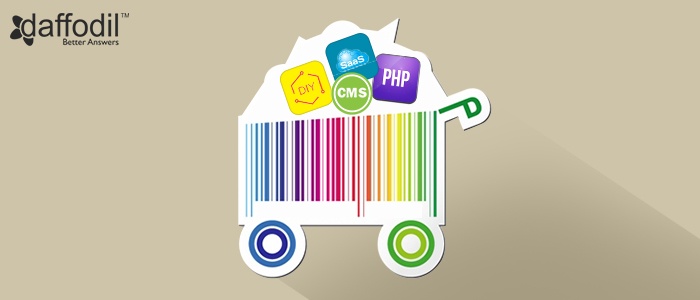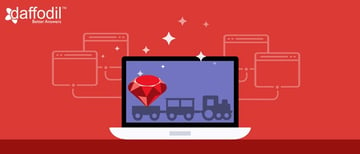
From brick-and-mortar retailers (like Walmart) to web-only retailing corporations (like Amazon or Rakuten), eCommerce platforms have certainly made shopping a plain sailing experience for customers. And these days, when smartphones are acting as supercomputers in pocket, consumers take the most of this ease to find, learn, or buy whenever they want-or when the whim bangs.
Certainly, the B2C eCommerce (both on web and mobile) brings in a profusion of opportunities for the merchants. And with time, it has become a scalable revenue generating model, with B2C eCommerce projected to make 3.2 trillion USD by 2020.
Regardless of the proven profitability of an online business, developing an eCommerce application, operating it, and then maintaining it seems to be complex, expensive, and time-consuming task. If you too have requirement to build an eCommerce platform but struggling to understand where to start from, then this guide is meant for you. Additionally, you can check our e-commerce consulting services. From choosing the right technology stack to managing the cost, you will get everything that’s needed to get started with an eCommerce platform.
SCENARIO 1: eCommerce Application Development from Scratch
When a shopping cart is to be developed from the beginning, the decision making on the following factors should start with the scale of eCommerce project. If the business model is tried and tested, go for a large scale solution and if one-of-a-kind idea (with uncertainty) is launched in the market, then going other way round is a good move.
Step1: Technology Selection
Content Management System (CMS): Building an online shop using CMS like Magento, Drupal, PrestaShop, OpenCart etc. is a time saving and cost-effective idea. However, it is recommended for low-scale solutions as it is less flexible. With a CMS, updating the website is quite easy. All that’s needed is to login to the dashboard and easily add, edit, delete, or manage the content. Very less professional knowhow is required to update the eCommerce platform with CMS.
Software-as-a-Service (SAAS): No hardware cost, no designing skills, no technical expertise. Still you can build gorgeous stores that compliments your business well. SAAS models for eCommerce application development like Shopify, BigCommerce offers everything that you need to get started with an online shop. From payments to secure checkouts to shipping, to unlimited support, they offer one spot solution, but at a limited scale.
ALSO READ: eCommerce Battle - Choosing the Right Platform for your Shop
Framework: Developing an eCommerce website/portal with Frameworks broaden up ways to customize the application with features, design, and functionality. This works well for large scale projects, is more flexible, but a time consuming development model. For building a product using framework, a pro developer team should be available to deal with the out-of-the-box integrations (like AR,VR, DIY, 3D, specific UI, animations, multi-tier-architecture etc.).
Step2: Platform Selection
Do you want to develop your eCommerce application for web or mobile? Well, this question might sound quite easy and obvious, but due to variety of application types available on web and mobile these days, it is important to decide upon the platform for development.
Web Apps: A web application will work browsers for web and mobile devices. Herein, the app interface is developed according to different screen sizes and the functionality is added accordingly.
Progressive Web Apps: According to Google, Of those who search, nearly 4 in 10 search only on a smartphone in an average day. To make the user experience on web just like mobile, there are Progressive Web Apps.
Mobile Apps: In the year 2017 (Q1), over 398 million smartphones were shipped worldwide, making the mobile apps one of the seamless medium to reach a large share of targeted audience. You can go for Android or iOS mobile apps that’s currently dominating the smartphone world.
ALSO READ: Android or iOS: For Which Platform you should Build your App First?
Step3: Admin Data Management
At bare minimum, an eCommerce platform is divided into two consoles: one for the shoppers and another for admin. The admin console should be powerful enough to control almost every aspect of how the online shop looks and functions. It’s supposed to be simple in design, yet packed with relevant features like managing SEO settings, adding new promotions to the site etc.
SCENARIO 2: Update Existing eCommerce Application
- If it’s a CMS
If the existing eCommerce website is built on a CMS (Magento, Drupal etc.), then it may have one of the following requirements:
To address any Existing Issues/Challenges: On the technical end, it’s common to confront challenges or issues in seamless implementation of transactions. This may include any issues in the existing theme, plugin, functionality etc. If a CMS built eCommerce is encountering such issues, they can be fixed with technical know-how of how they are built. For example: If it’s a Magento based eCommerce, then an expertise of PHP can offer a solution.
Enhance UI/UX or Add Features: As mentioned above, the scope of features and functionality in a CMS is quite limited, in comparison to a custom eCommerce development. Therefore, possibility is the the existing website requires some new features to be added to it or some improvements have to be done in its interface and user experience.
Mobile App Corresponding the CMS/Online Shop: If the low scale shop built on CMS prove to be a hit amongst the audience, then mobile apps for the corresponding platform is definitely the next move. This helps to broaden the reach amongst the audience, introduce new features, functionality, and accessibility mode.
In this process, the requirement may include updating the CMS to compliment the mobile features. For this, there could be requirement for API development for the CMS, modification in features/look & feel to match up with the standards of the mobile app.
- If it’s a Custom eCommerce Website
If the existing website or portal needs out-of-the-box integration, customizing it is best thing to opt for. This may require following enhancements in the existing online shopping platform. It can be any one of the following:
Advanced Functionality: With time, new technologies have been introduced that are indeed making online shopping quite near to the real time experience. This includes real time modification,DIY, Augmented Reality, Virtual Reality, Artificial Intelligence etc. To know what’s trending in the eCommerce industry, check out this segment shared below.
ALSO READ: eCommerce Trends to Watch out For in 2017
High Performance: With eCommerce platforms hosting huge, festive sales, offering discounts, attracting traffic as a group, performance is certainly the utmost requirement. Custom eCommerce application development offer opportunities to make that possible, ensuring unuttered shopping experience to the users.
ALSO READ: The App-Only Mindset behind Flipkart’s BigBillionDays
Multi-tier Scalable Architecture: An online shop is just interacting between the buyer and the portal. It involves the warehouse team, shipping team, and other processings related to an order. In a multi-tier architecture, a different client-server model is developed for presentation, processing and management purpose. Therefore, if a multi-tier eCommerce architecture is created, it means a separate client-server system, with interconnection is developed for each of the teams. And this possible only with custom development system.
eCommerce Application Development on List? We can Help
The online shopping industry is thriving and thus, individuals and businesses are making the most of it. For building a platform that’s scalable and integrated with latest development technologies, custom eCommerce app development is the solution to consider.



